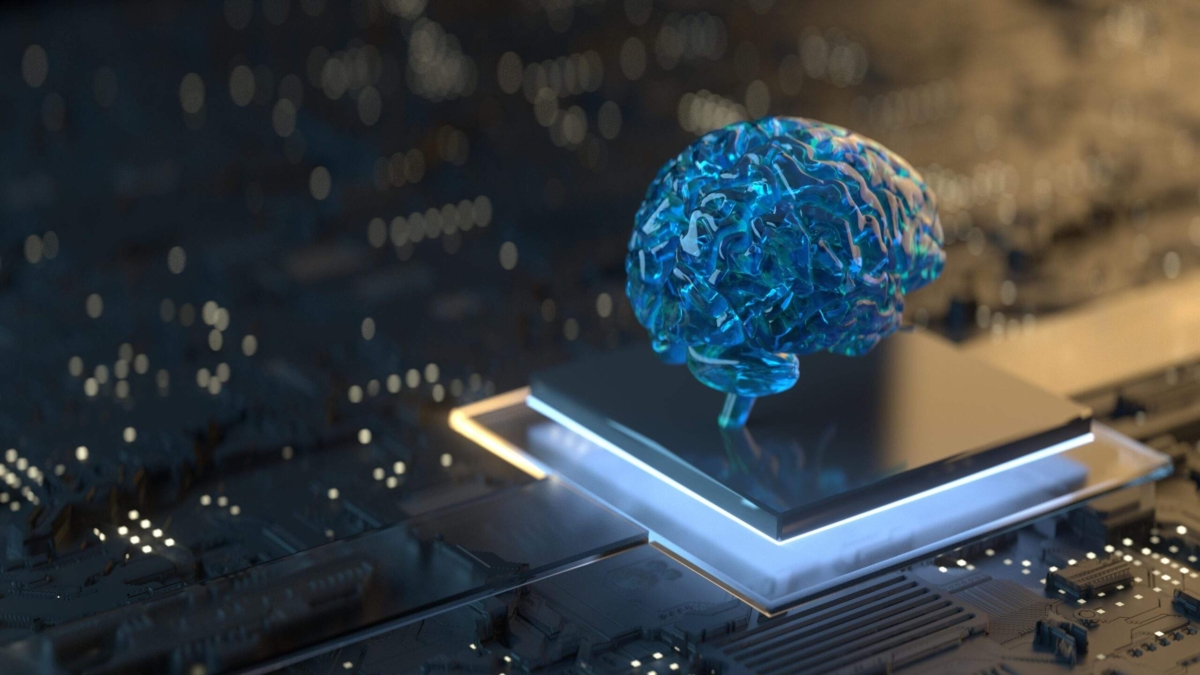The Transformative Role of Artificial Intelligence in Software Development
Artificial Intelligence (AI) has evolved from a theoretical concept into a game-changing reality, especially in the realm of software development. This article aims to provide an in-depth look at how AI is revolutionizing the software industry, from automating mundane tasks to making strategic decisions.
Unveiling the Multifaceted Role of Artificial Intelligence in Software Engineering
Artificial Intelligence (AI) is a transformative technology that has its roots in computer science, yet its branches extend into various domains, including software engineering. At its core, AI aims to emulate human-like cognitive functions such as problem-solving, learning, planning, and natural language understanding. These capabilities are not just theoretical constructs; they have practical applications that are profoundly impacting the software development landscape.
-
AI as a Developer’s Tool
In the realm of software development, AI serves a dual role: it is both a tool for developers and a subject of development. As a tool, AI can automate a range of tasks that would otherwise consume a developer’s time and energy. For instance, AI algorithms can automatically generate boilerplate code, allowing developers to focus on the unique aspects of a project. This is particularly useful in large-scale projects where repetitive code is abundant.
-
AI for Requirements Engineering
Another critical area where AI is making strides is in requirements engineering. Traditional methods of gathering and documenting requirements are often labor-intensive and prone to errors. AI-powered tools can sift through large sets of data, including user reviews, feedback, and even social media mentions, to compile a comprehensive list of requirements. These tools can also prioritize these requirements based on various factors such as user needs, business value, and technical feasibility.
-
Quality Assurance and Testing
Quality assurance is a critical aspect of software development that ensures the final product is free from defects and meets the specified requirements. AI can automate many QA tasks, such as regression testing, performance testing, and even security audits. Machine learning algorithms can learn from previous test cases and adapt to new scenarios, making the testing process more efficient and robust.
-
AI in DevOps
The DevOps culture, which emphasizes the integration of development and operations, is also benefiting from AI. Predictive analytics and machine learning algorithms can forecast potential system failures or bottlenecks, allowing for preventive measures to be taken before a problem escalates. This proactive approach enhances system reliability and minimizes downtime.
-
Natural Language Processing in Software Development
Natural Language Processing (NLP), a subfield of AI, is also finding applications in software development. For example, NLP algorithms can analyze and interpret human language in bug reports, making it easier to categorize and prioritize issues. This capability is particularly useful in open-source projects where community-contributed bug reports can be numerous and varied.
-
AI as a Subject of Development
Beyond being a tool, AI is also a subject of software development. Developers are actively engaged in creating AI models for various applications, from chatbots and recommendation systems to advanced analytics engines. This aspect of AI in software development is continually evolving, with new algorithms and techniques being developed to solve increasingly complex problems.
Artificial Intelligence is not just a peripheral technology in the world of software engineering; it’s becoming integral to the entire development lifecycle. Whether it’s automating mundane tasks, aiding in complex decision-making, or serving as the subject of new and innovative applications, AI’s role in software development is both expansive and transformative.

Revolutionizing Software Engineering: The Multidimensional Applications of AI
Artificial Intelligence is no longer a futuristic concept; it’s a present-day reality that is reshaping various industries, including software engineering. The technology is not just a tool but a versatile assistant that can handle a multitude of tasks, from code generation to quality control. Below are some key areas where AI is making a significant impact.
Automated Code Crafting: Beyond Simple Generation
One of the most talked-about applications of AI in software engineering is automated code generation. While it’s true that AI-generated code is not yet sophisticated enough to replace human developers, it’s also true that it’s far more advanced than mere boilerplate code. AI algorithms can analyze project requirements and generate code structures that are tailored to those specific needs. This level of automation frees up developers to focus on more intricate and creative aspects of a project, such as feature development and user experience design.
Intelligent Requirements Management: The Watson Way and Beyond
Gathering and managing requirements is a critical yet often cumbersome part of software development. AI tools like IBM’s Watson have revolutionized this process by automating the collection and prioritization of requirements. These systems can analyze large datasets, including user feedback, market trends, and even regulatory guidelines, to compile a comprehensive and prioritized list of project requirements. This not only minimizes manual effort but also significantly reduces the potential for human error, making the development process more efficient and reliable.
Data-Driven Project Planning and Design
Planning, estimating, and designing a software project are complex tasks that involve various variables, from resource allocation to budget constraints. AI can simplify this complexity by providing data-driven insights. For instance, machine learning algorithms can analyze past projects to make accurate estimates for new ones. They can also suggest the most efficient team configurations and even predict potential bottlenecks, thereby aiding in effective project planning and design. While the final decisions still lie with human managers, AI serves as an invaluable advisor that can significantly reduce risks and improve outcomes.
Quality Assurance Reimagined: From Error Scanning to Feedback Analytics
Quality control is another area where AI is making significant strides. Traditional methods of quality assurance often involve manual testing, which is time-consuming and prone to errors. AI algorithms can automate this process by scanning code for vulnerabilities, performance issues, and other errors. But AI’s role in quality assurance doesn’t stop at error detection; it extends to feedback management as well. Advanced AI systems can collect, analyze, and categorize user feedback, providing actionable insights that can be used to improve software quality and user experience.
AI’s applications in software engineering are diverse and far-reaching. From automating routine tasks to providing intelligent insights, AI is not just assisting but revolutionizing the way we think about and engage in software development.
The Expanding Horizon: Diverse Industries Embracing AI-Driven Solutions
Artificial Intelligence is not confined to a single sector or application; its influence is widespread, touching various industries and revolutionizing traditional practices. Here’s a look at some of the key areas where AI-powered solutions are making a significant impact.
-
Unearthing Hidden Treasures: AI in Data Mining
Data is the new gold, and AI algorithms serve as the modern-day pickaxes and shovels. Industries like retail, healthcare, and finance are leveraging AI-powered data mining tools to extract valuable insights from massive datasets. These insights can range from consumer behavior patterns to potential market trends, providing a competitive edge to businesses.
-
Beyond Number Crunching: Data Analysis and Personalization
AI’s role in data analysis goes beyond mere statistical calculations. It can classify and segment data to deliver more personalized experiences, particularly in the realms of targeted advertising and content delivery. For instance, AI algorithms can analyze a user’s browsing history and social media interactions to recommend products or content that are most likely to engage them.
-
Your Virtual Companion: AI Assistants in Everyday Devices
Smart devices like smartphones, smart speakers, and even smart home systems are increasingly incorporating AI assistants to enhance user interaction. These AI-powered virtual companions can perform a range of tasks, from setting reminders to controlling home appliances, making our daily lives more convenient and efficient.
-
Steering the Future: AI in Autonomous Driving
The dream of self-driving cars is becoming a reality, thanks to advancements in AI algorithms. These algorithms can process real-time data from various sensors and make split-second decisions that are crucial for safe and efficient driving. As this technology matures, it has the potential to revolutionize not just personal transportation but also logistics and public transit systems.
-
Game On: AI’s Role in Interactive Entertainment
AI has been a part of the gaming industry for decades, but its role has evolved from controlling simple, predictable characters to creating complex, dynamic environments. Modern video games often feature AI-driven non-player characters that can adapt and respond to player actions, making the gaming experience more immersive and challenging.
-
The Art of Conversation: AI in Dialogue Systems
Chatbots like ChatGPT and Jasper are pushing the boundaries of what automated dialogue systems can achieve. These AI-driven platforms can engage in complex conversations, answer queries, and even generate written content. As these systems become more sophisticated, they could serve as customer service agents, personal advisors, and even as scriptwriters for interactive media.
-
The Creative Machine: AI in Visual Arts
Artificial Intelligence is also making waves in the creative world. AI algorithms can now generate intricate designs, paintings, and even sculptures. These tools are not just novelties but are being used in professional art installations, advertising, and digital media.
AI’s influence is ubiquitous, affecting a multitude of industries in various capacities. From data mining to creative arts, AI-powered solutions are not just enhancing existing systems but are creating new opportunities and paradigms.

The Upside of AI: Transformative Advantages in Software Development
The integration of Artificial Intelligence into software development is not just a trend; it’s a paradigm shift that offers a plethora of advantages. Here’s an in-depth look at how AI is positively impacting the software development landscape.
-
Turbocharging Development: Speed and Scale
One of the most immediate benefits of AI in software development is the significant acceleration of the development cycle. AI algorithms can automate repetitive tasks such as code generation, testing, and even some aspects of design. This not only speeds up the process but also allows for the development of more complex systems within the same timeframe.
-
The Evolving Developer: From Coder to Creator
AI’s ability to handle routine tasks frees up developers to focus on more complex and creative aspects of software development. This shift in roles enhances the quality of the end product, as developers can invest more time in innovative features, user experience design, and other elements that differentiate a great product from a good one.
-
Navigating Success: Data-Driven Strategic Decisions
AI’s capability to analyze vast datasets provides invaluable insights for strategic decision-making. Whether it’s choosing the right features to develop or identifying potential market gaps, AI-driven analytics can guide teams to make more informed, less risky decisions, thereby increasing the likelihood of a project’s success.
-
Flawless Execution: Automated Error Management
One of the most tedious aspects of software development is debugging. AI can automatically detect, diagnose, and even correct errors in the code. This not only reduces downtime but also improves the overall reliability and quality of the software, making it more robust against future issues.
-
Fort Knox of Software: Enhanced Security and Quality Assurance
Security is a growing concern in the digital age, and AI can play a pivotal role in enhancing software security. AI algorithms can scan code for vulnerabilities, ensuring that the software is not just functional but also secure. This goes hand-in-hand with improved quality assurance, as automated testing can cover a broader range of scenarios than manual testing.
-
On the Money: Precise Project Estimations
One of the perennial challenges in software development is the accurate estimation of project timelines and budgets. AI, trained on data from past projects, can provide remarkably precise estimates. This level of accuracy is invaluable for project planning and can significantly improve client relationships by setting realistic expectations.
-
Lightening the Load: Workload Reduction for Developers
AI’s ability to automate various aspects of software development significantly reduces the manual workload on developers. This allows them to focus on more value-added activities, such as brainstorming new features, improving user experience, or even upskilling, thereby contributing to both personal and organizational growth.
-
The Pulse of the User: Real-Time Feedback Analysis
In today’s fast-paced world, user feedback is gold. AI can analyze real-time user feedback to provide actionable insights. This enables continuous improvement and allows developers to make quick adjustments to features or resolve issues, enhancing user satisfaction and engagement.
-
Additional Advantage: Scalability
AI not only speeds up the development process but also makes it more scalable. Automated systems can easily adapt to increased workloads or more complex requirements, making it easier for companies to grow and evolve without a proportional increase in development challenges.
The advantages of integrating AI into software development are manifold and transformative. From speeding up development cycles to enabling more strategic decision-making, AI is not just enhancing the software development process; it’s revolutionizing it.
Navigating the Maze: Challenges and Considerations in AI-Driven Software Development
While the advantages of incorporating AI into software development are compelling, it’s crucial to acknowledge the challenges and complexities that come with it. Here’s a detailed look at some of the hurdles that organizations may encounter.
-
The Talent Gap: Need for Specialized Skills
One of the most significant challenges in implementing AI in software development is the need for specialized skills. AI and machine learning require a different set of expertise compared to traditional software development. Finding or training developers who are proficient in both can be a daunting task, leading to delays and increased costs.
-
The Power Play: Computational Requirements
AI algorithms, especially those related to machine learning and data analytics, require substantial computational power. This can be a limiting factor for smaller organizations or projects with restricted budgets. The need for specialized hardware, such as GPUs for machine learning tasks, can add another layer of complexity and cost.
-
The Ethical Quandary: Data Privacy Concerns
AI’s ability to analyze vast amounts of data is both a strength and a challenge. With increasing concerns about data privacy and security, organizations must be extremely cautious about how they collect, store, and use data. Ensuring compliance with regulations like GDPR becomes more complicated when AI is involved in data processing.
-
The Human Factor: Job Displacement and Ethical Considerations
As AI takes over more tasks traditionally performed by humans, there’s growing concern about job displacement. While AI can handle repetitive tasks, the fear is that it might soon be capable of performing more complex tasks that are currently the domain of skilled developers. This raises ethical questions about the future of work and the potential need for social adjustments.
-
The Black Box Dilemma: Explainability and Accountability
AI algorithms, particularly deep learning models, are often criticized for being “black boxes” that provide no insight into how they arrive at a particular decision or output. This lack of transparency can be a significant issue in critical applications where accountability is crucial.
-
The Data Dependency: Quality and Bias
AI models are only as good as the data they are trained on. Poor quality or biased data can lead to inaccurate or unfair outcomes. Ensuring that the data is both high-quality and representative is a significant challenge, requiring ongoing effort and vigilance.
-
The Cost Factor: Initial Investment and Maintenance
Implementing AI in software development is not just about the technology; it’s also about the investment. The initial costs of setting up AI systems can be high, including the costs of hardware, software, and skilled personnel. Additionally, AI models require continuous maintenance and updating, adding to the long-term costs.
8. The Integration Challenge: Legacy Systems and Compatibility
For organizations with existing legacy systems, integrating AI can be a complex and time-consuming process. Compatibility issues can arise, requiring additional time and resources to resolve.
While AI offers transformative advantages in software development, it also presents a set of challenges that require careful consideration and planning. Addressing these challenges is crucial for harnessing the full potential of AI in software development.
The Dawn of a New Epoch: AI and Human Synergy in Software Development’s Future Landscape
In the ever-evolving world of technology, AI stands as a monumental shift, not merely a fleeting trend. Its integration into software development is already proving transformative, offering a plethora of advantages while also posing intricate challenges. As we look toward the future, it’s clear that AI’s role will only continue to expand, further revolutionizing the way we approach software development.
The collaboration between AI and human intelligence is not a zero-sum game; rather, it’s a symbiotic relationship that enhances the capabilities of both. AI serves as a powerful tool that can handle tasks ranging from code generation to quality assurance, freeing human developers to focus on more complex and creative aspects of software development. This synergy is setting the stage for unprecedented levels of innovation, efficiency, and effectiveness in the industry.
However, it’s crucial to navigate the challenges that come with this technological marvel carefully. From ethical considerations to the need for specialized skills, these challenges require thoughtful solutions. But as we continue to advance in this field, the potential for positive impact is immense.
Incorporating AI into software development is not just about staying current; it’s about preparing for the future. Companies like Zeren are at the forefront of this evolution, offering cutting-edge software development services that leverage the power of AI. As AI technologies continue to evolve and mature, they will serve as foundational elements in Zeren’s next generation of software solutions. The future is not just about AI; it’s about how AI and human ingenuity can come together to create something greater than the sum of their parts.
In conclusion, AI is not just the future of software development—it’s the present, and its transformative impact is already being felt across the industry. If you’re looking to stay ahead of the curve and capitalize on the myriad benefits that AI can offer, now is the time to reach out to Zeren. As we continue to explore this exciting frontier, one thing is clear: the best is yet to come, and with Zeren, you can be a part of it.






